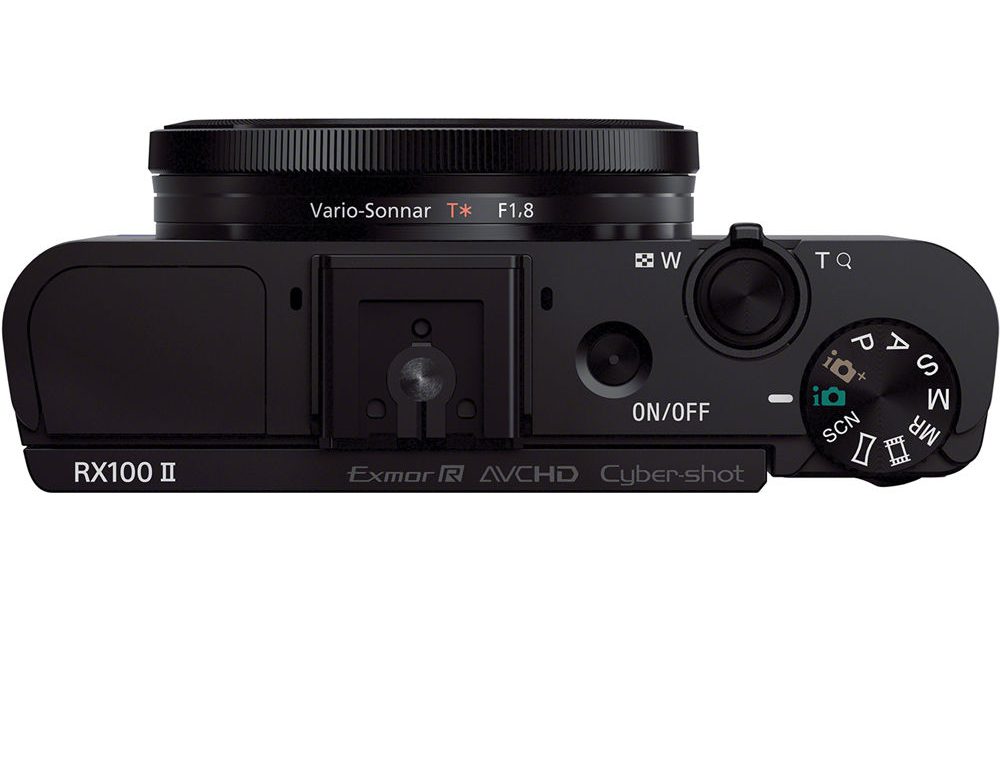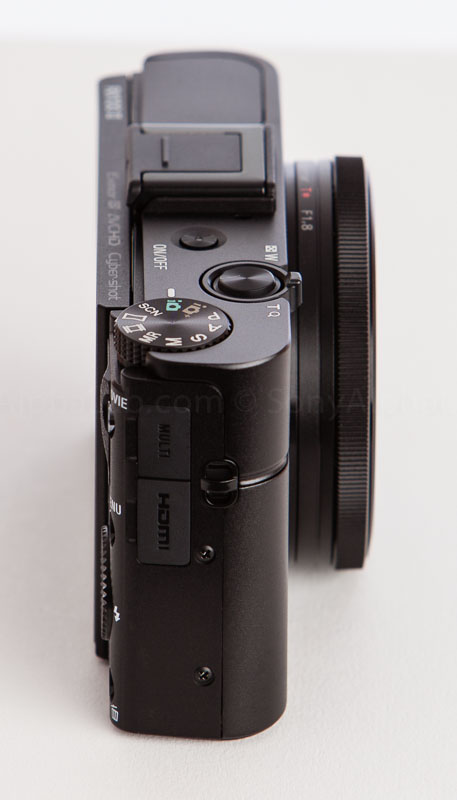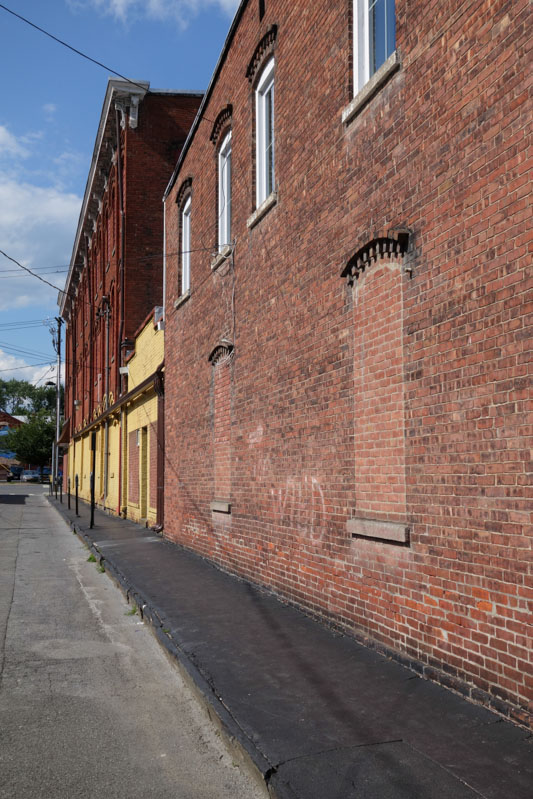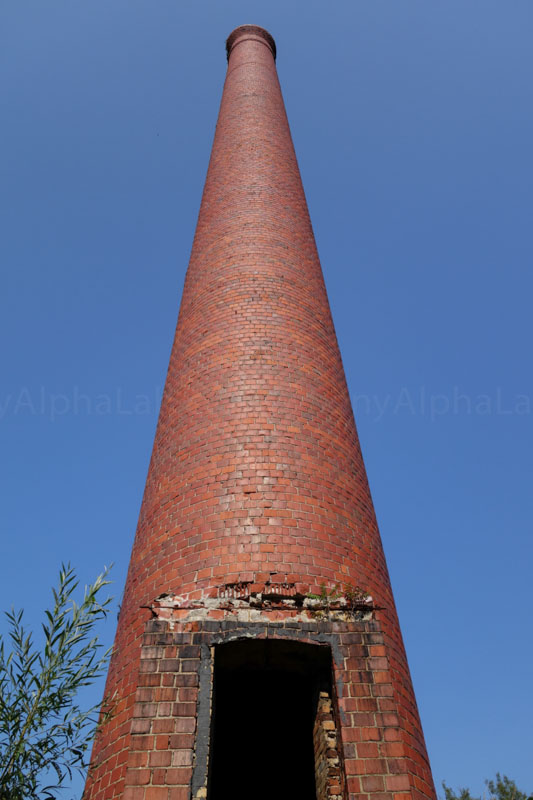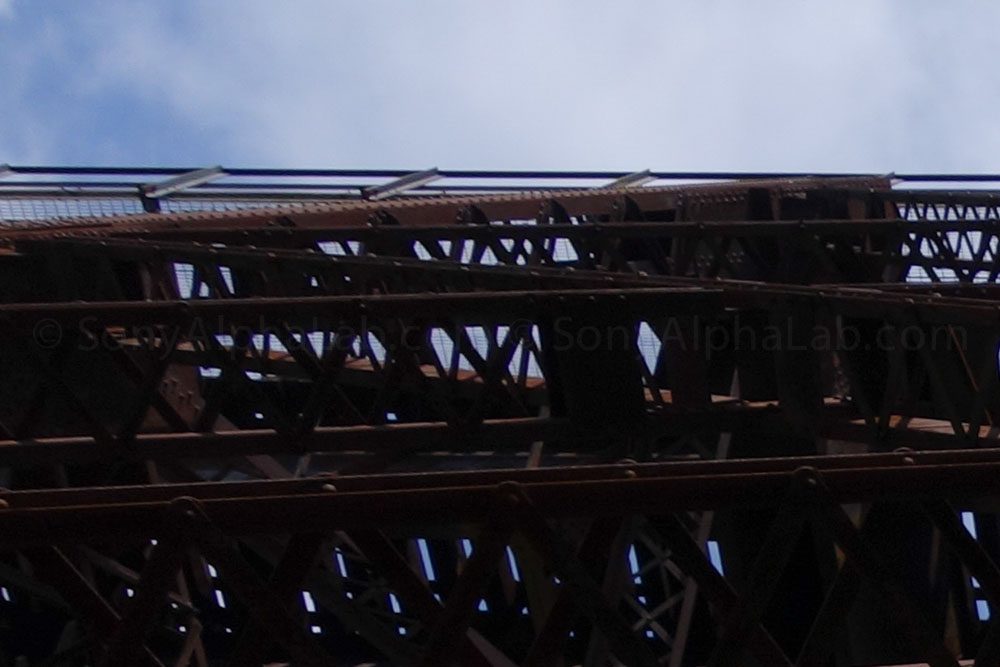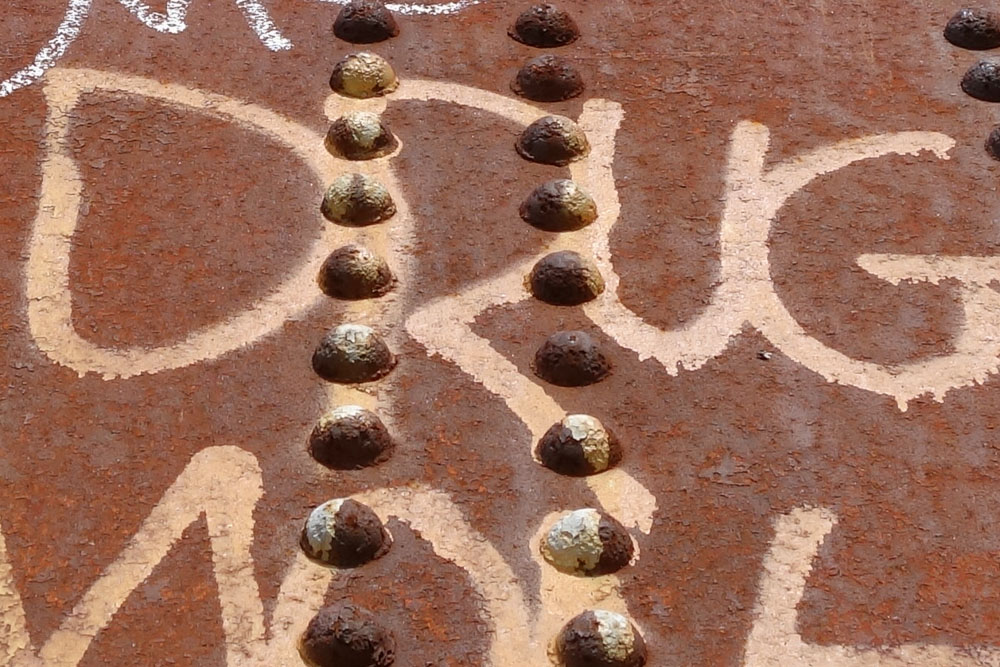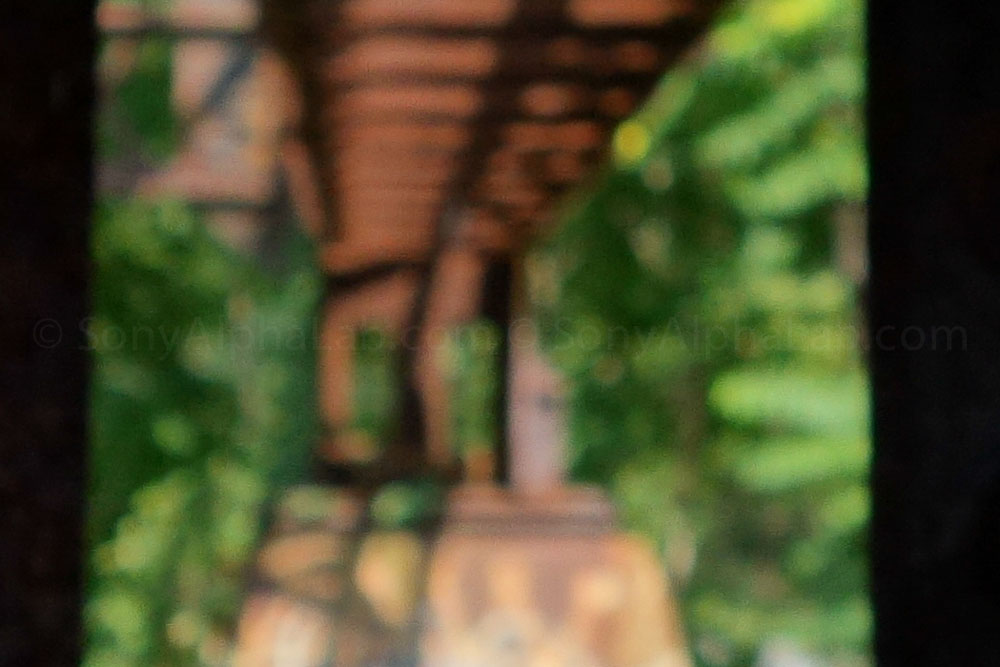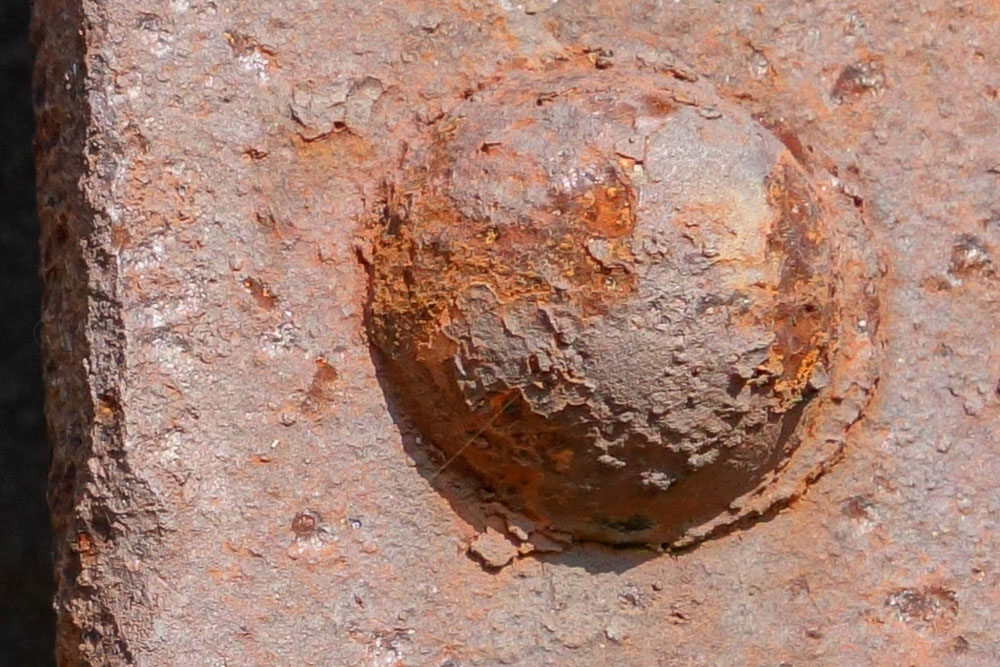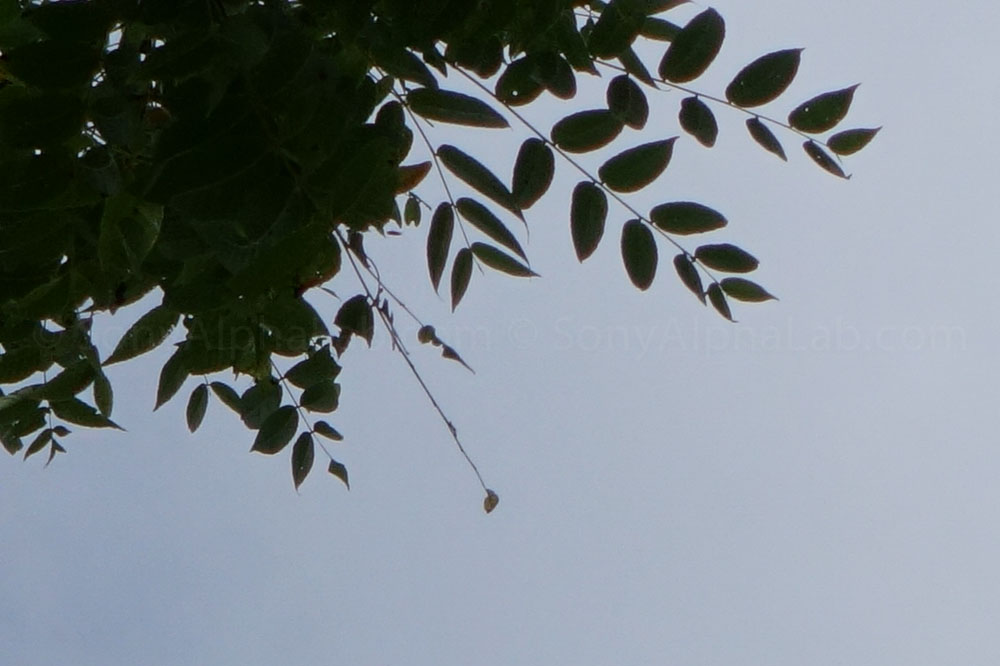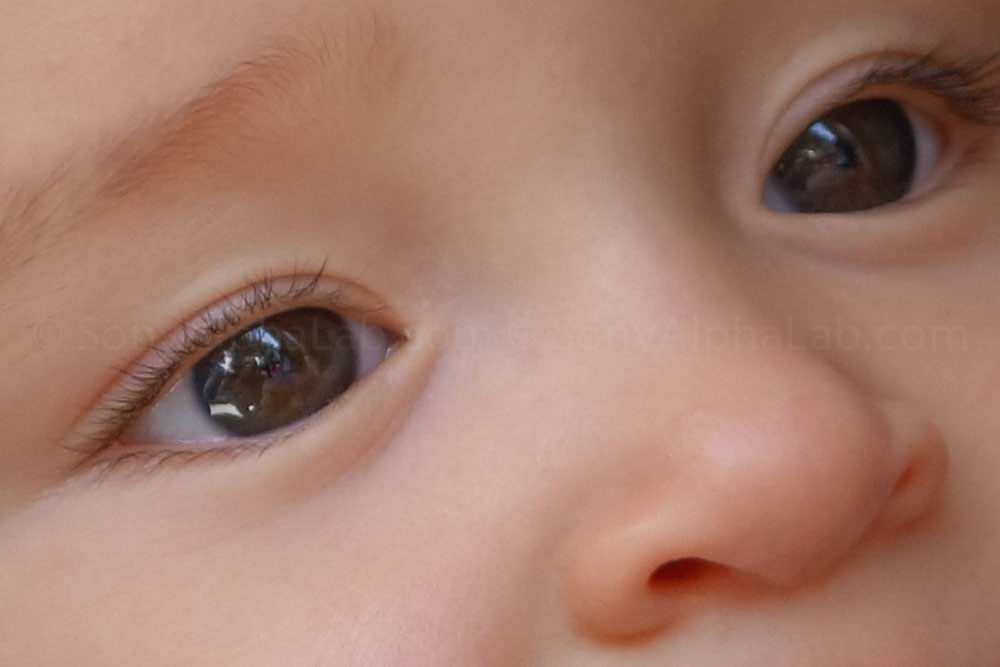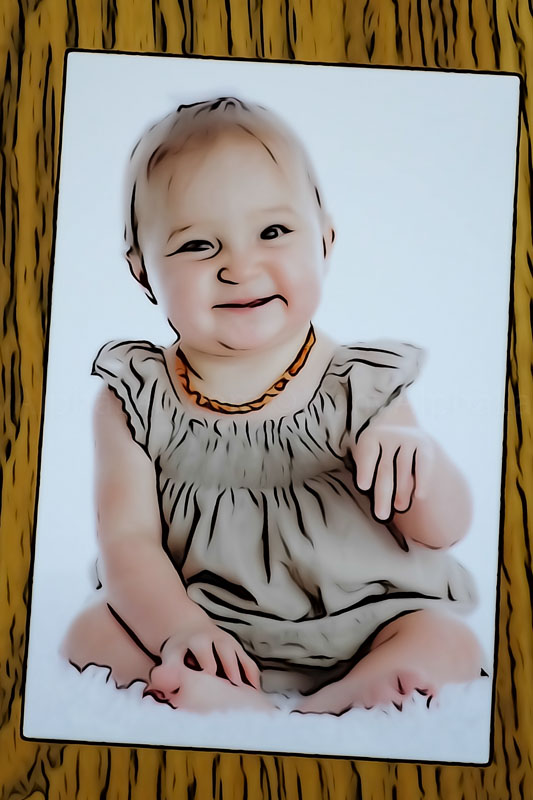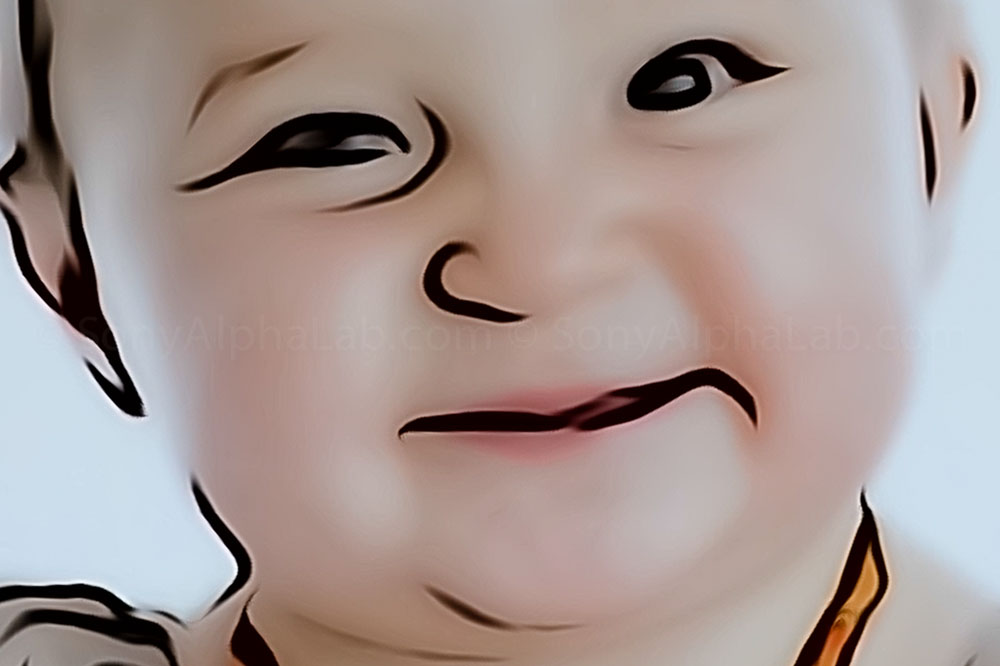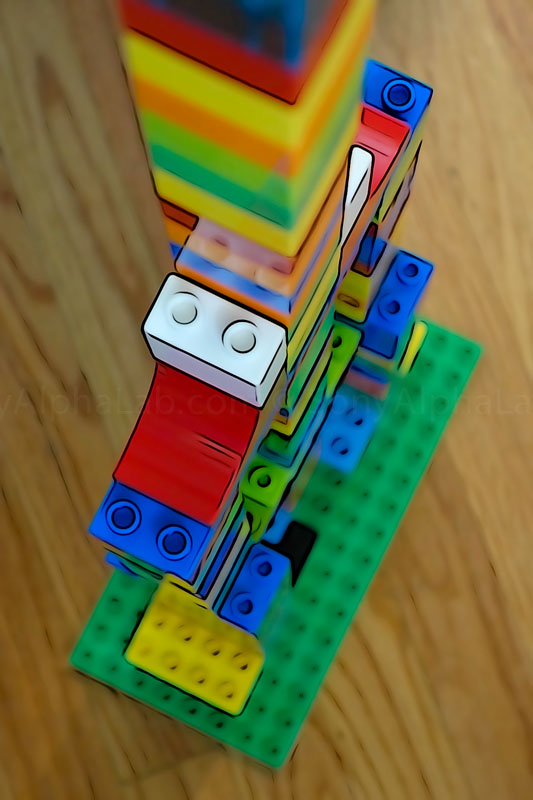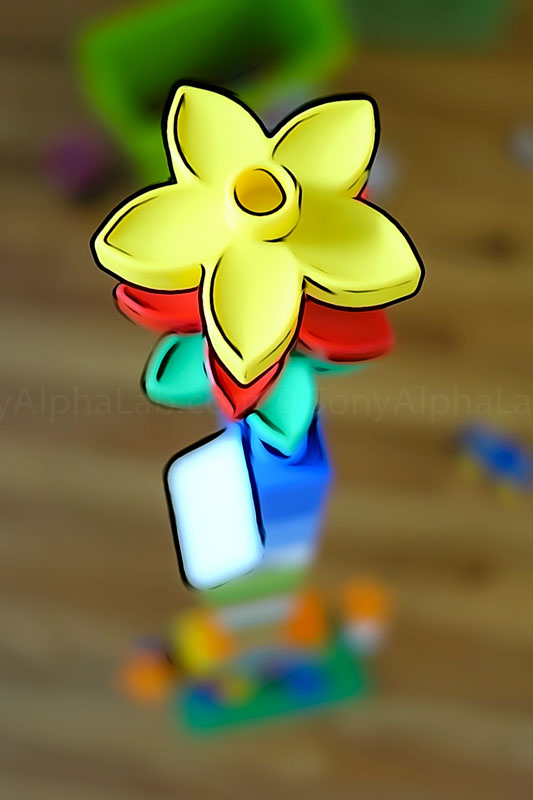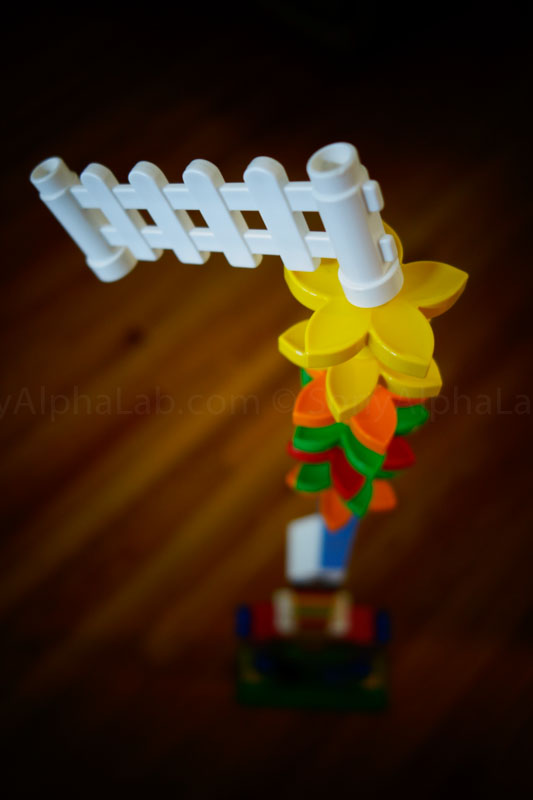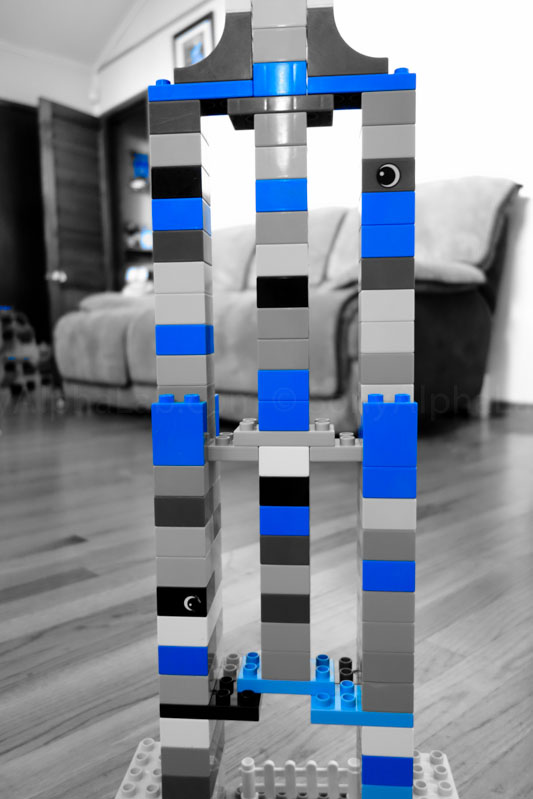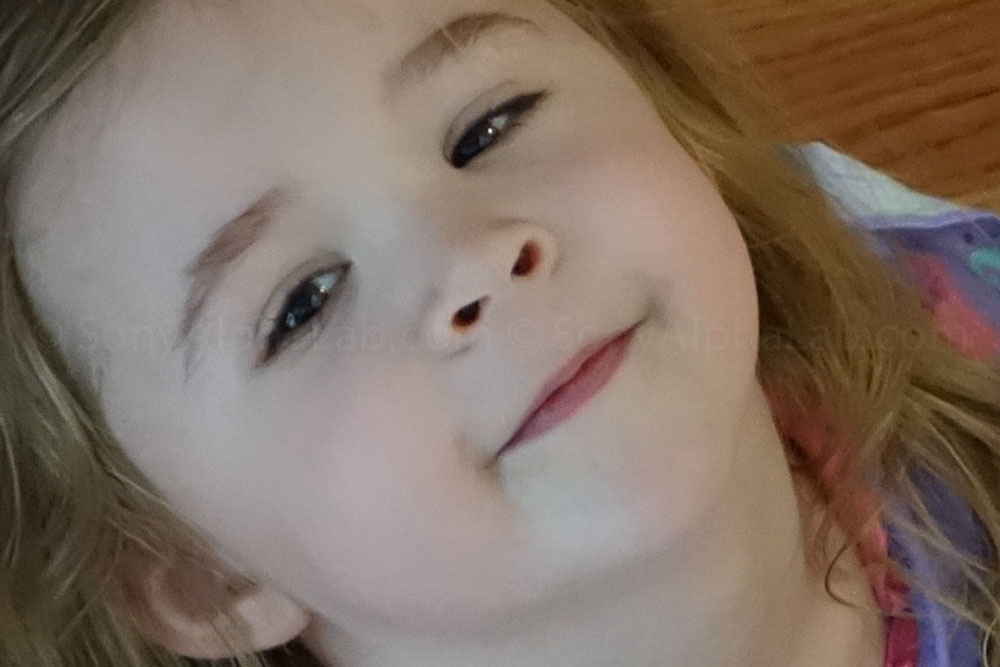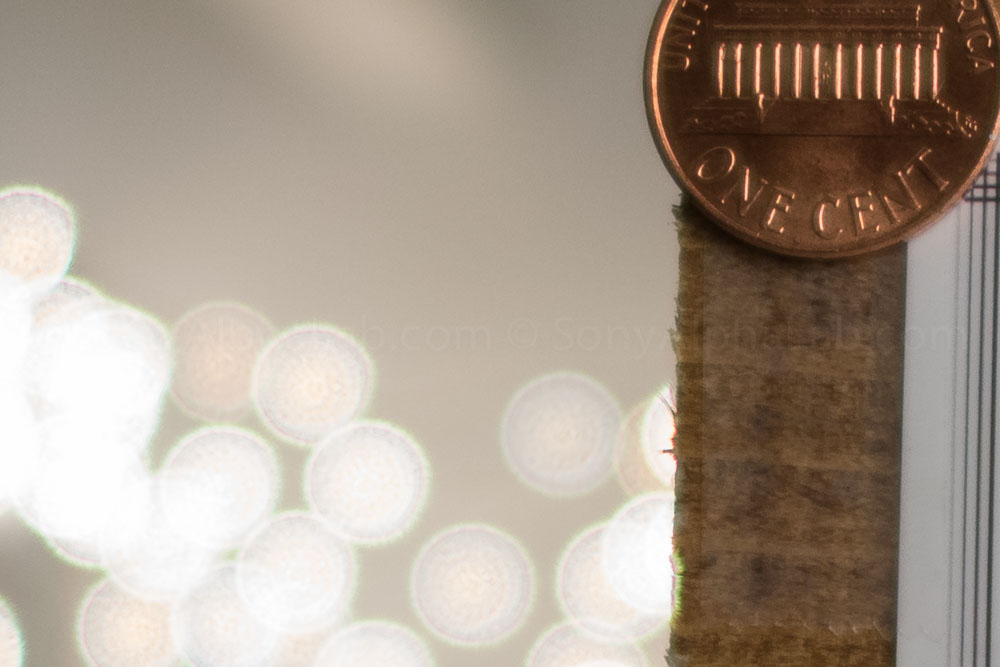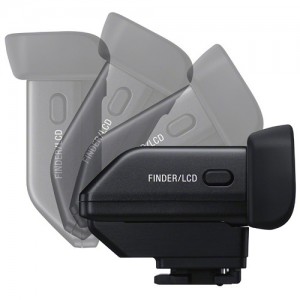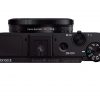In this Sony Cyber-shot RX100 II review, I will cover everything you need to know using real world photography and experience. At the time of this review the Sony RX100 II retails for $748 US @ BHPhotoVideo
Sony announced a new updated version of the RX100 called the RX100 II only a few short months ago. Featuring an updated 20.2mp Exmor R sensor for better low light performance, an articulating rear lcd screen, and standard hot-shoe, the RX100 II certainly has upgrades worth noting.
The RX100 II looks pretty much identical to the original RX100 from the front, except for the hot shoe on top which is clearly visible. Check out the original RX100 I Reviewed Here >>
Key features:
- 20.2 MP Exmor 1″ CMOS sensor – extreme low-light shots
- Bright F1.8 Carl Zeiss Vario-Sonnar T* lens w/3.6x zoom
- Simple connectivity to smartphones via Wi-Fi® or NFC
- Up to ISO 12800 sensitivity w/ advanced noise reduction
- Focus as fast as 0.13 seconds with high speed AF
- P/A/S/M operating modes with smooth precise control ring
- Record your photos as JPEG files, RAW files, or both
- Multi-interface Smart Accessory Shoe for system accessories
- Full HD 1080/60p video w/manual control and dual record
- Large tiltable 3″ display w/ bright whites & true blacks
- Retail Price = $748 US @ BHPhoto
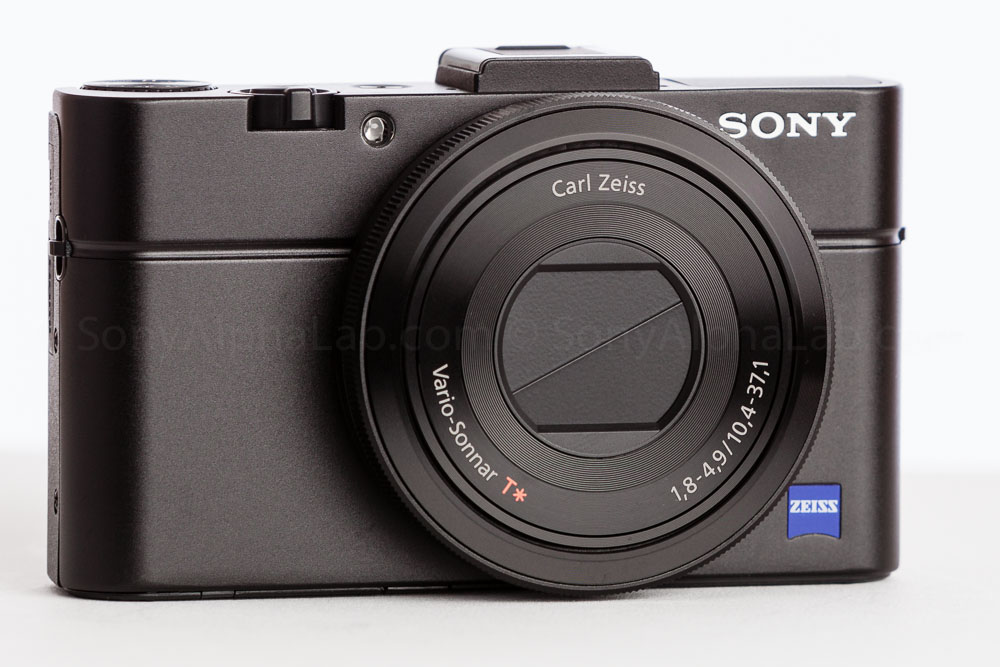
From the side you can see the very tight joints and attention to detail that makes the build quality RX-series worthy.
Swinging around to the back you can see how the screen creates a vertical crease between the thumb controls. It looks like Sony made the camera almost the same exact size which is remarkable considering the engineering challenges required. The cost is a slightly fragile screen do to the overall thinness and large size.
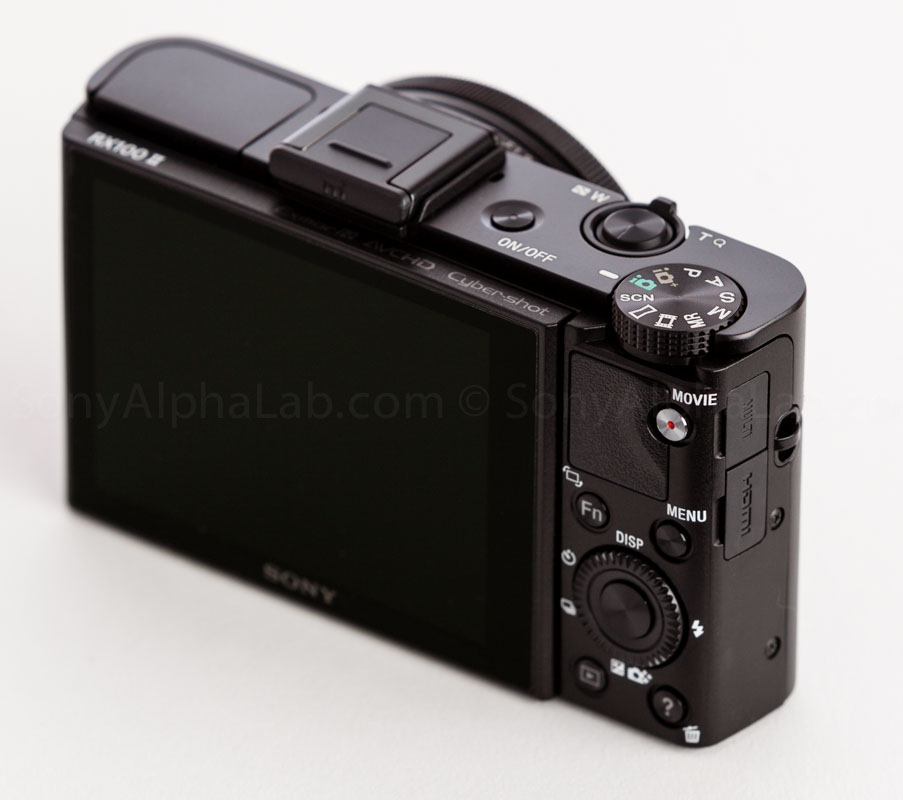
When articulating the rear display screen, you need to be careful. On my Nex-6 for example, I can just pull on the bottom of my screen and it smoothly slides into the upward facing position. You cannot do that with the RX100 II screen. My suggestion for articulating the screen is to grab it from the top and the bottom at the same time, and then pull it outward. Then articulate the screen as desired. This will make sure nothing catches and gets stressed. A little more ruggedness on the rear display screen hardware would be a suggestion for the next generation version in my opinion.
Color and image quality wise the screen is excellent and it’s relatively easy to see in the daylight believe it or not.
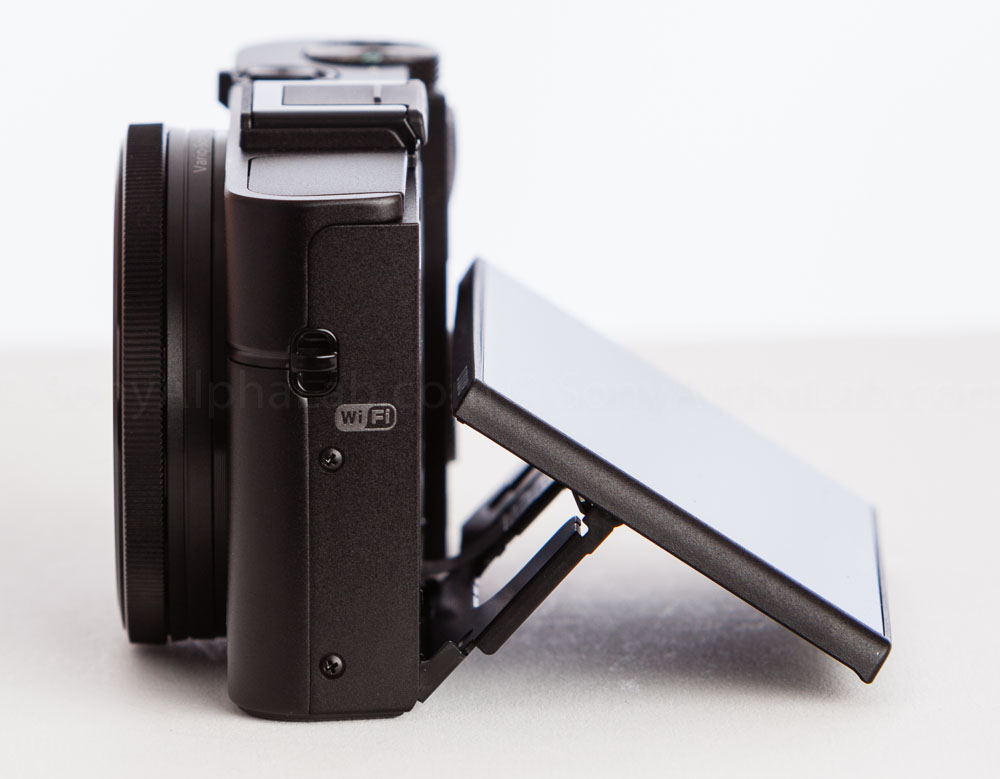
The zoom lens extends pretty far out when the camera is turned on, so be ready for this. Make sure nothing is in front of the camera that the lens can smash into. The lens only moves in and out slightly when zooming the full range.
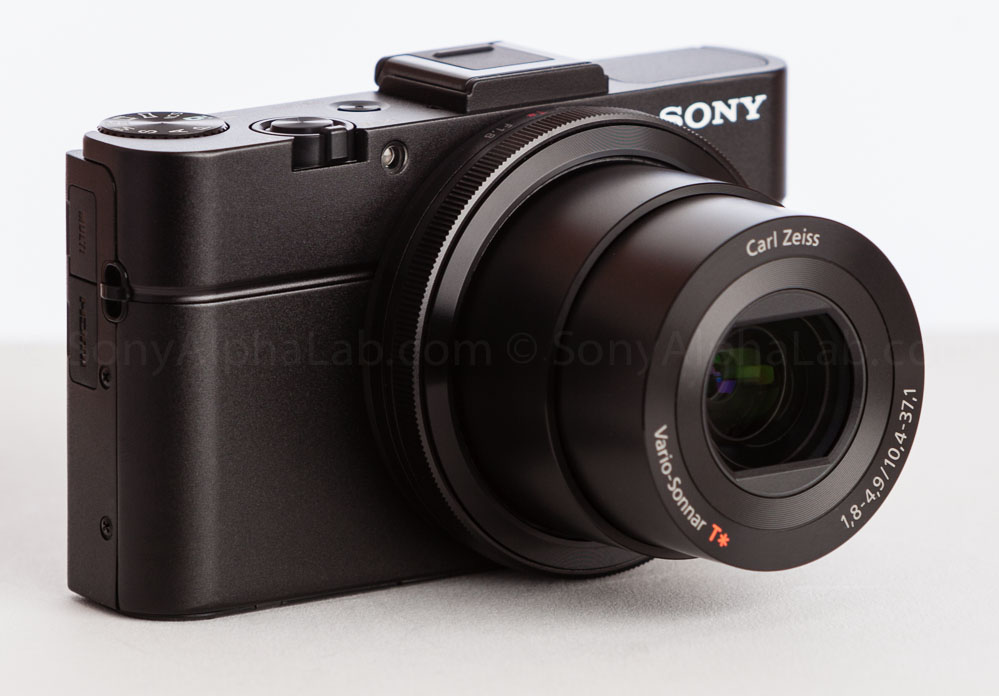
My Sony RX100 II Review – Video Version
In this Sony DSC-RX100 II video review, I will go over the camera body in my hands so you get a sense of scale. I will also go over the screen articulation and give suggestions on how to use it. I will also go over the manual zoom ring and how it works in the various camera modes, The function (Fn) button, using the Memory Recall (MR) Mode, overview of the menu system and what settings I’m using, Flash, how to find your images and movies on the camera, Sample Video, and much more…. Sorry it’s not the greatest video quality as I was watching Layla when I recorded the video and had to sneak out on the deck between rain drops. The blacks are darker than they should be do to my poor lighting of the scene and I apologize. You will see what I mean in the shadow areas during the video, but the content itself is still totally fine.
Sony RX100 II Sample Photos
Here are a few Sony RX100 II Real World sample photos using the best Jpeg quality and various modes. I also used Lightroom 5 to manage the photos and exported them as jpegs, 65% quality, 1000px max width, sharpening for screen low. These settings look very accurate sharpness and color wise to the original photos. I need to conserve the size of these files more than ever with the new server, so I want to make sure you know the specifics.
Check out the very first image I took at an outdoor restaurant type place. The dynamic range was super intense in the scene, so it made for a great test photo in my opinion. The colors and contrast are a little flat, but the camera over exposed a bit do to being under the roof and overall average metering. A really hard scene for any camera is the bottom line.

 |  |  |
The color and contrast on this next vertical is excellent in my opinion. The distortion control of the lens, and software correction is also very impressive!
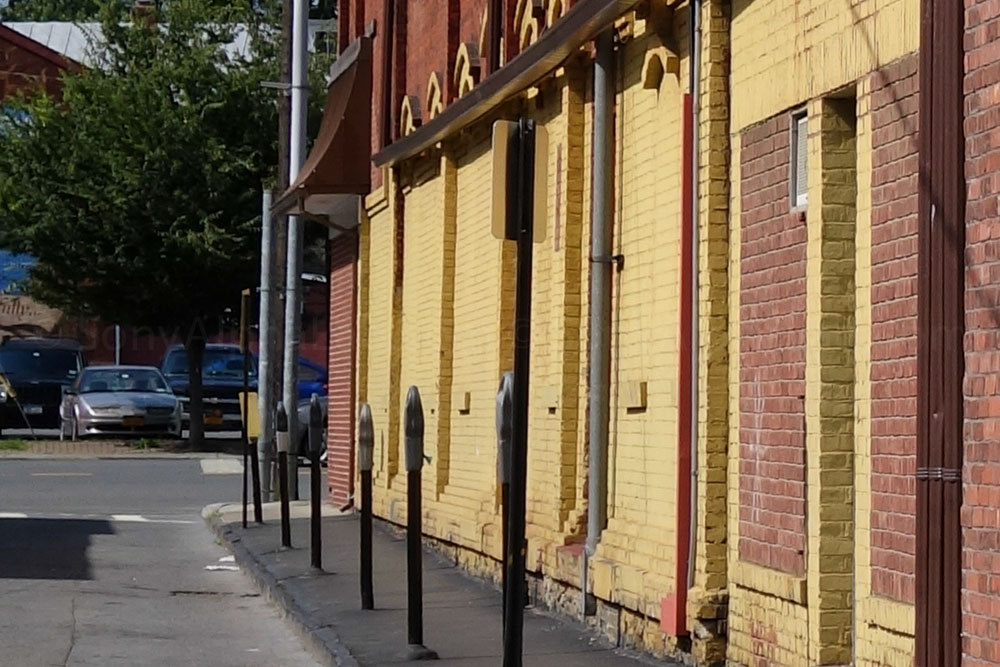
Next is a familiar street scene that has perfect light in the early morning which creates and excellent and consist review test photo. It offers highlight detail, shadow detail, textures, colors, you name it. The RX100 II does a really good job and when you click on the 100% Crops you will see what I mean. This first frame was @ 10.4mm which is as wide as the camera goes.
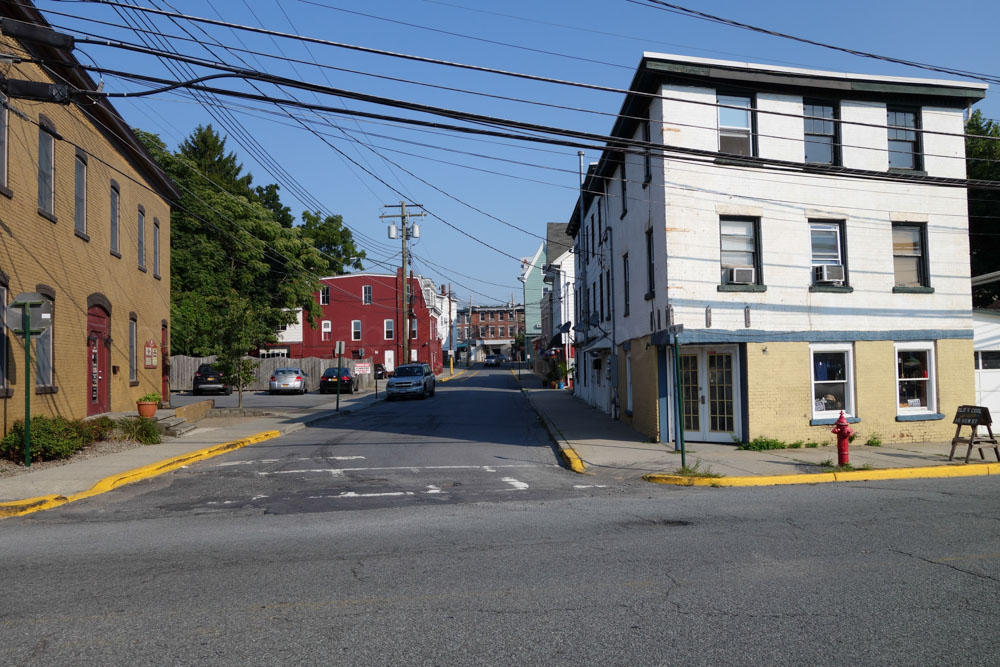
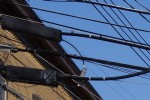 | 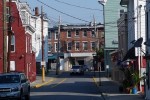 | 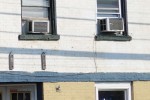 |
Same scene, but at full optical zoom this time which is 37.1mm or 3.6x or 100mm effective zoom.
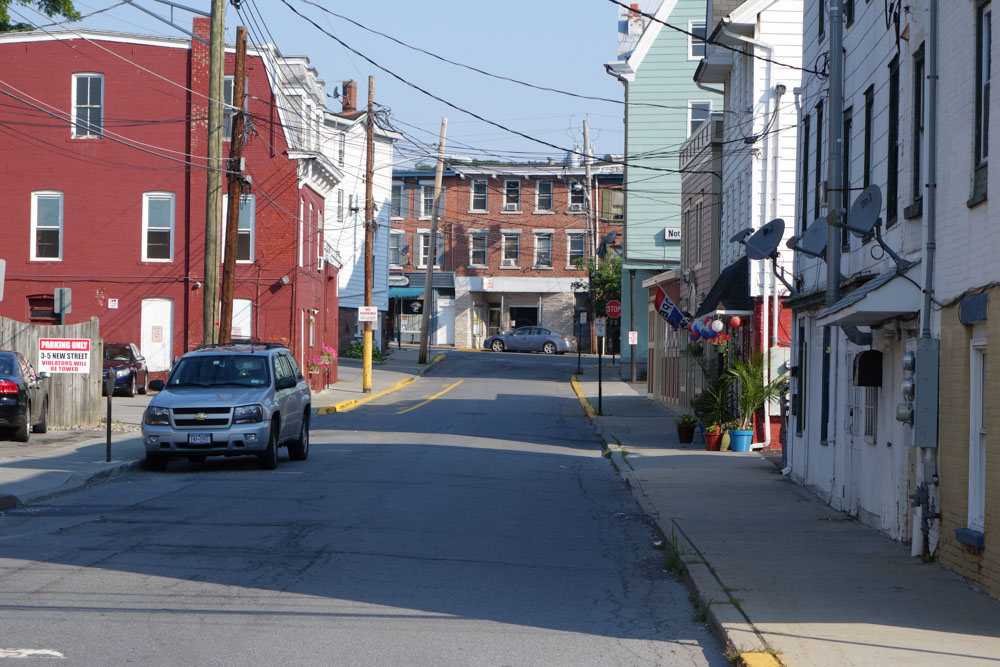
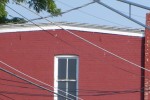 | 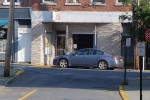 | 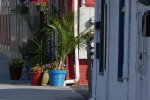 |
An old shipyard next to the Hudson river in the mid-morning sun.

 | 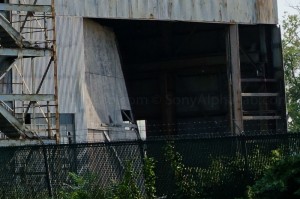 |
An old smoke stack near the shipyard that is very tall.
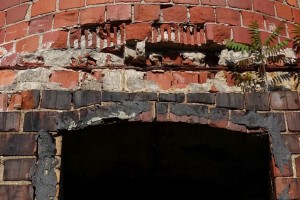 | 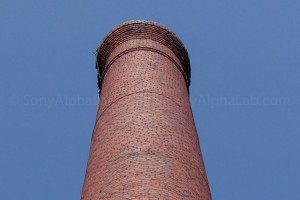 |
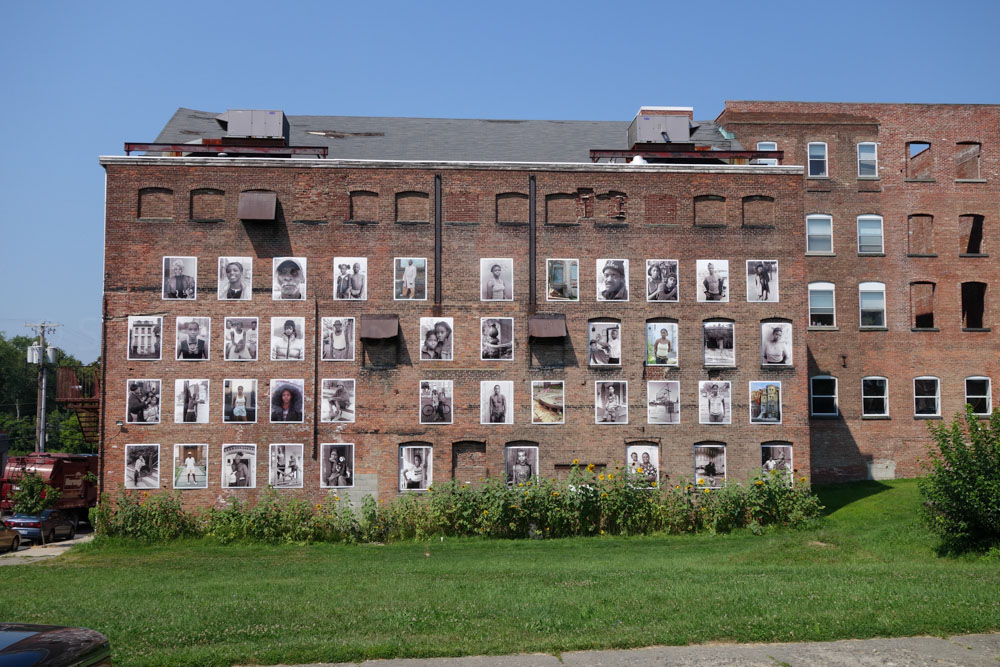
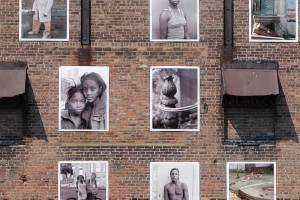 | 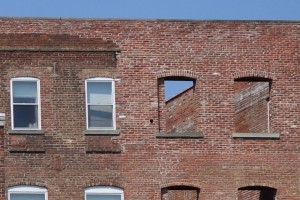 |
With the new articulating screen, getting shots like this next image is much easier. I had the RX100 II about six inches off the ground with the screen facing upward in my hands. The glare was pretty bad considering where it was located, but I was still able to see well enough to compose the shot with ease. These types of shots are with out an articulating screen really require a knee in the dirt and your face to be almost on the ground. A tri-pod makes it easier, but you still have to see the screen which can be really difficult. Once you have a screen that articulates, it’s hard to go back I must admit 😉 Moodna Viaduct:
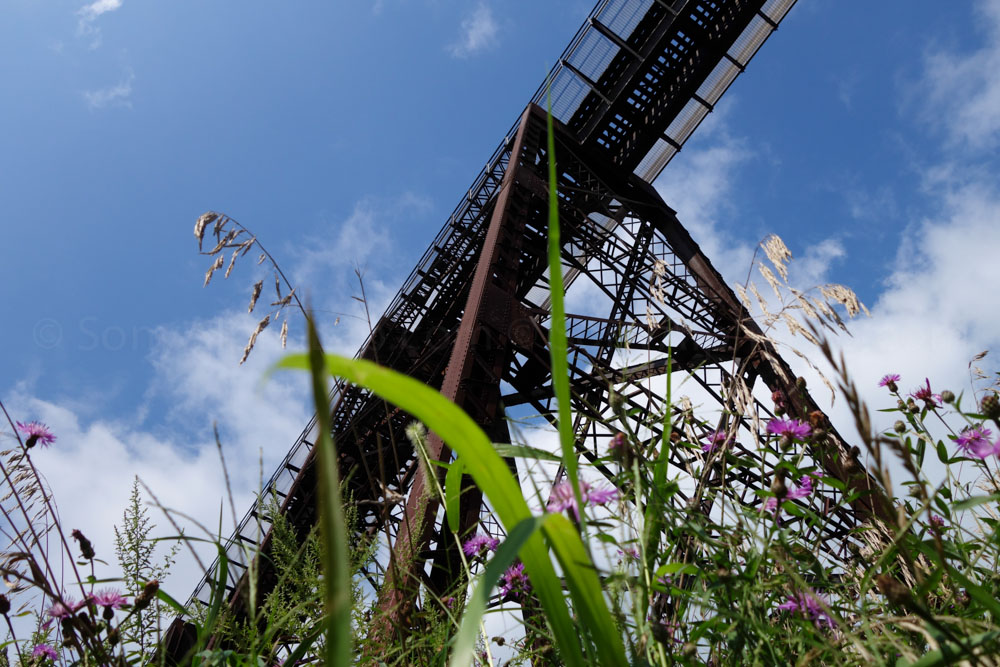
Note the lens distortion control on the horizontal track towards the top of the frame. There is no distortion at all from what I can see, and this is at full wide-angle ~10.4mm.
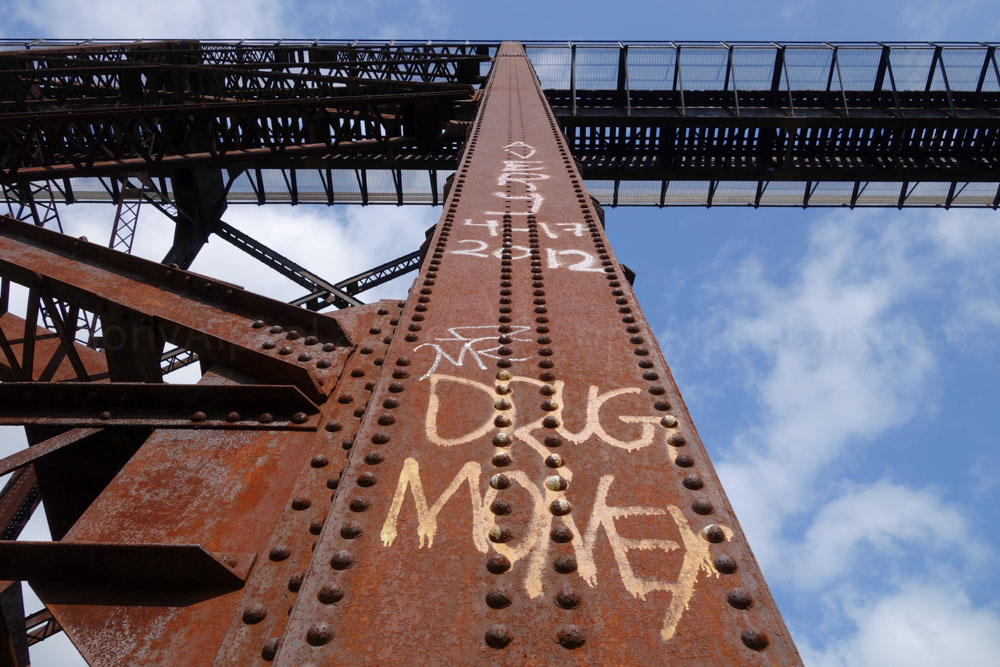
When you get close to your subject it’s much easier to get the background out of focus as seen below in the base of the huge beam.

Another angle:
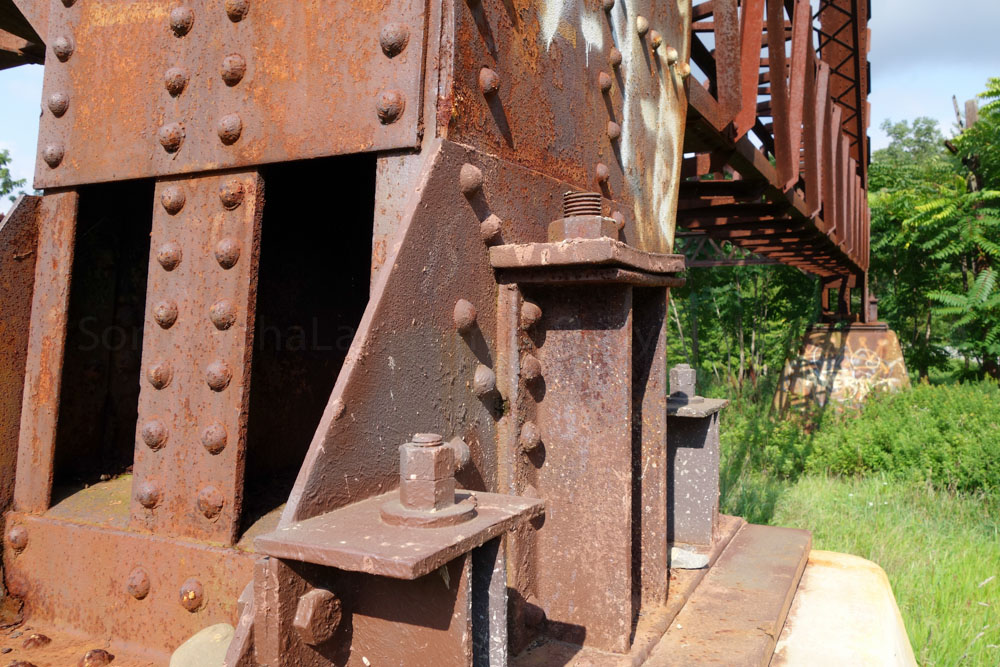
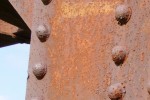 | 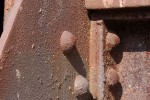 | 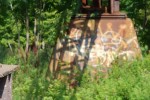 |
[divider] Taking a few steps back from the bridge and you really get a sense of the massive structure. I glanced to the left and a really nice composition presented itself to me and I was still using full auto jpeg mode. The camera chose f/5.6, but for maximum sharpness front to back, a higher aperture would have been better. f/11 for example in aperture propriety mode would be a good place to start in my opinion.
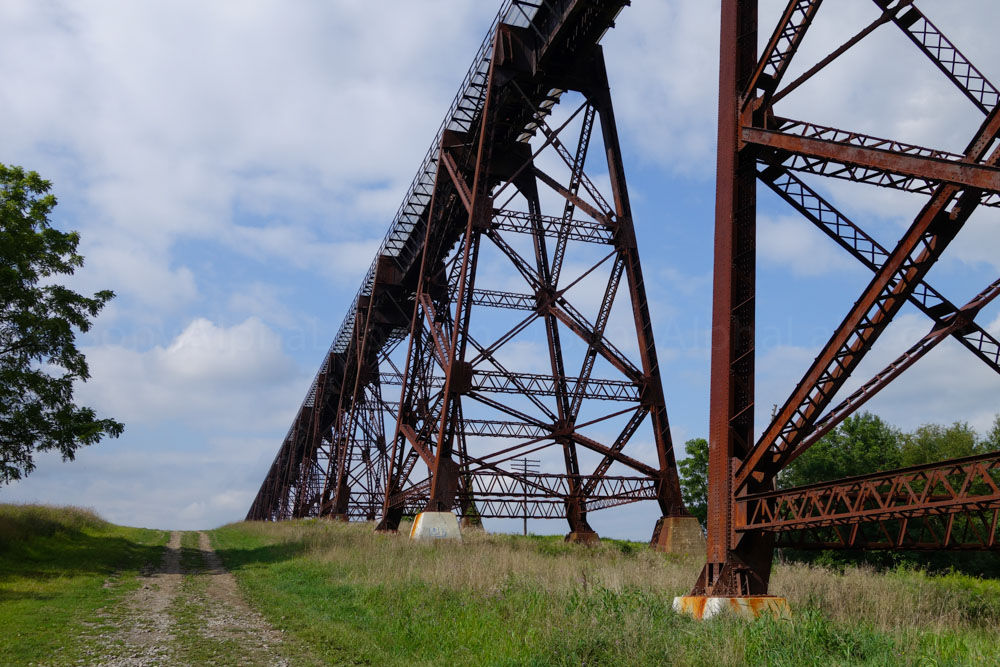
The perspective view.
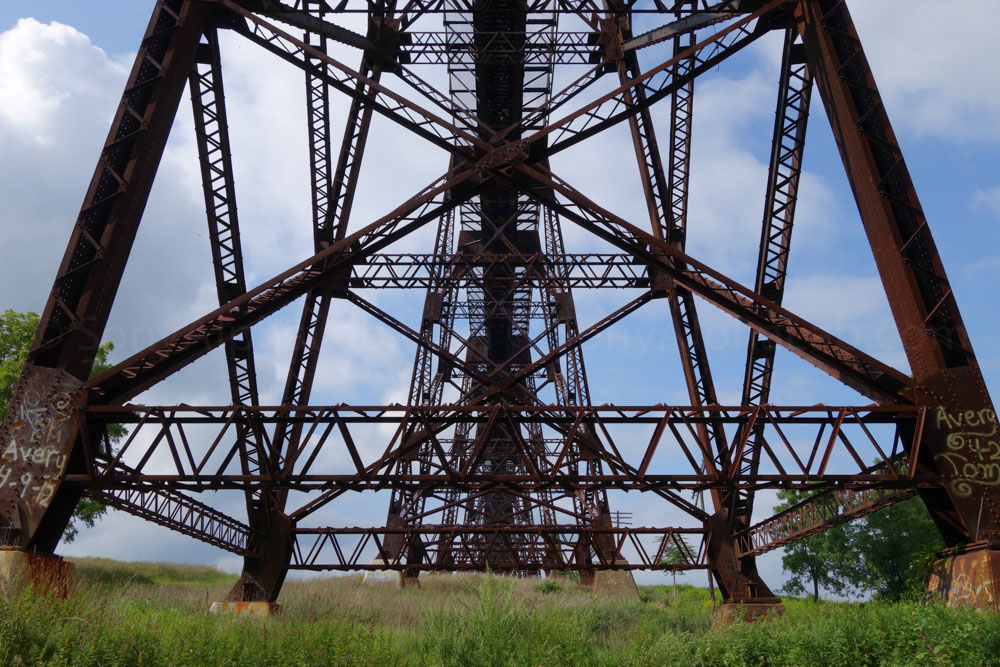
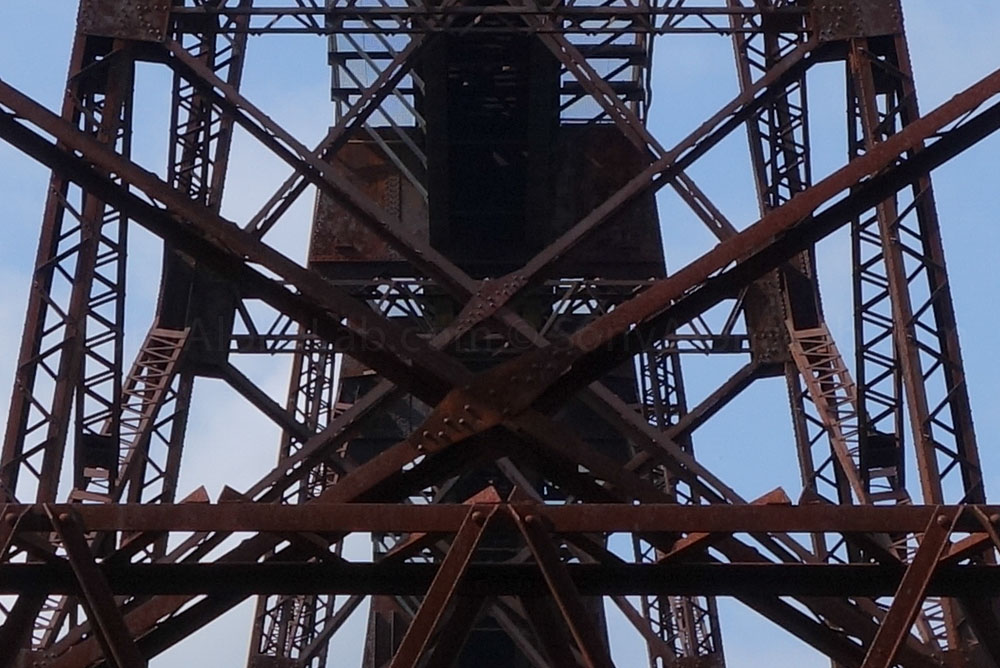
as I was walking to the car a commuter train was passing by, so I grabbed a quick zoomed in snapshot.
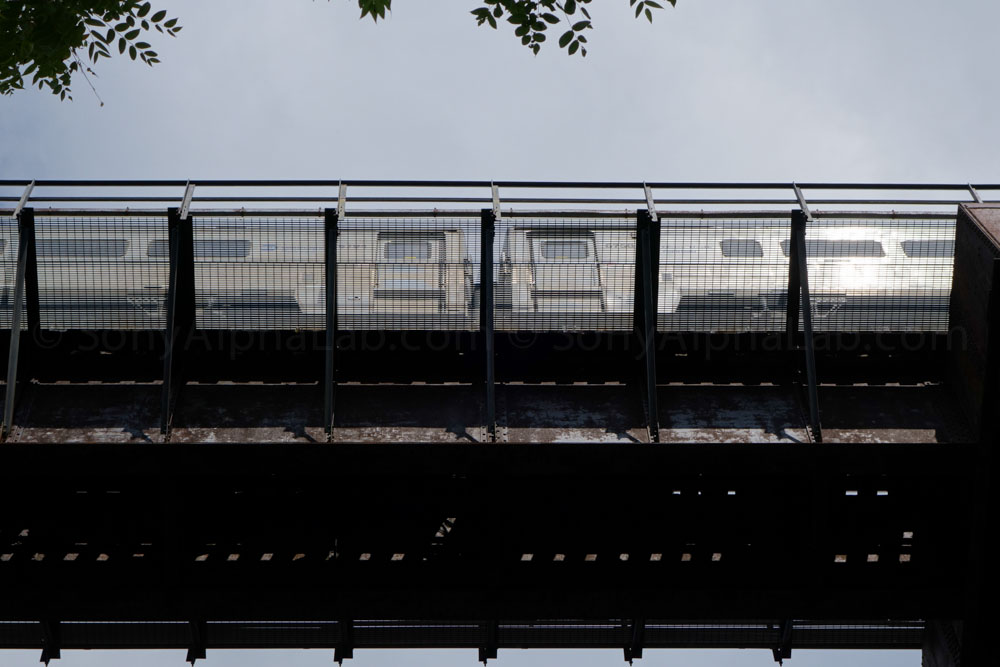
A quick snapshot from the other day when some family came over for a visit.
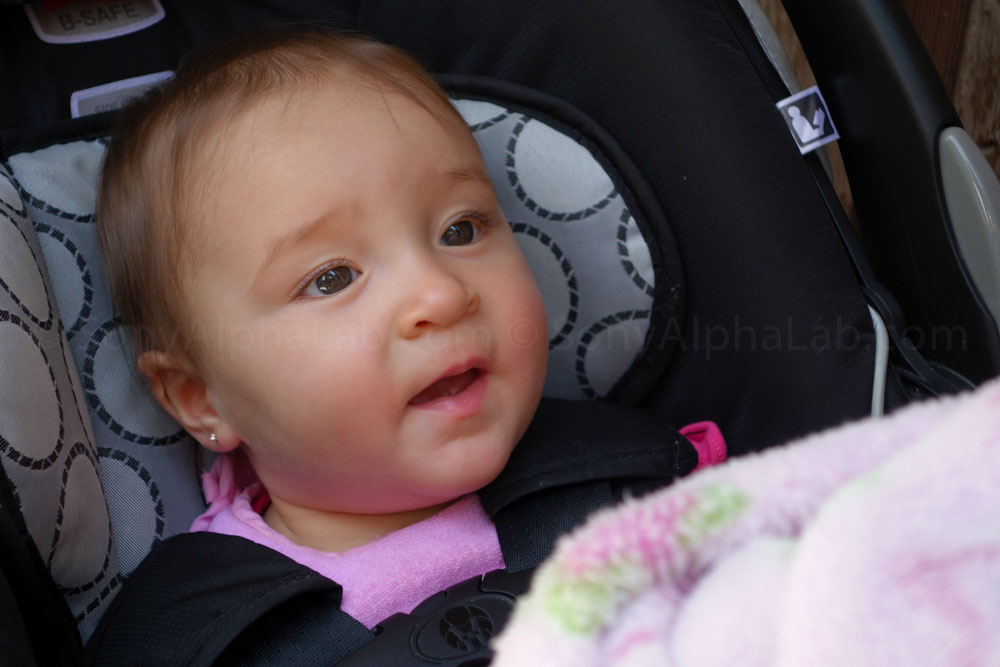
Illustration Mode
I love using the Illustration Mode feature. Here is a snapshot of a photo on the kitchen table which offers some interesting details on the artistic effect.
Layla and I built a pretty awesome Lego tower and what better way to show it off than with the fun camera creative modes like illustration mode, selective/ Partial color, and Toy Camera.
Real World High ISO Sample
Layla posing proudly with one of our Lego towers @ ISO 3200. Looks noticeable better than the original RX100 in my opinion @ ISO 3200.
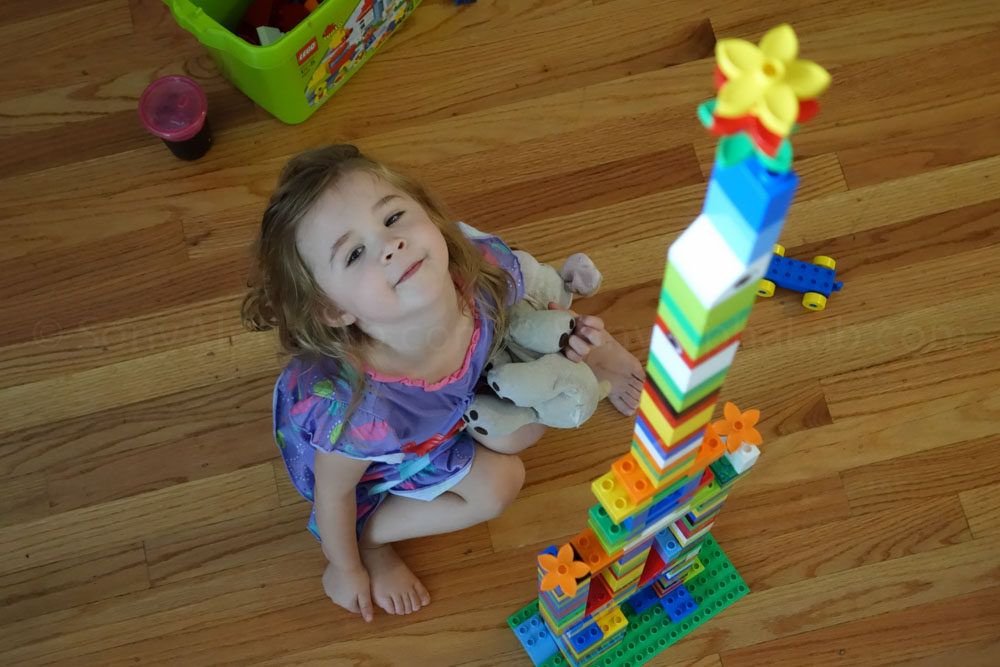
Lab Test Photos
The Sony RX1oo II performed pretty well in the current Lab set-up, and the smaller 1″ sensor has impressive capabilities considering the pixel density. The depth of field is not the same as the larger APS-C sized Nex camera sensors which is easy to see in the lab. The smaller the sensor, the less depth of filed separation and control you have. The fast f/1.8 lens does provide some significant depth of field when close to your focus point and/or at the minim focus distance. Check out the bokeh test shots for a closer look at what I mean.
Lab Scene @ 10.4mm ~28mm equivalent
Full Scene @ f/1.8 I had the RX100 II set to Aperture Priority mode, ISO 100, Auto WB corrected in lightroom 5 using center test chart, Average Metering, Auto focus, tri-pod mounted, and 2-second self timer.
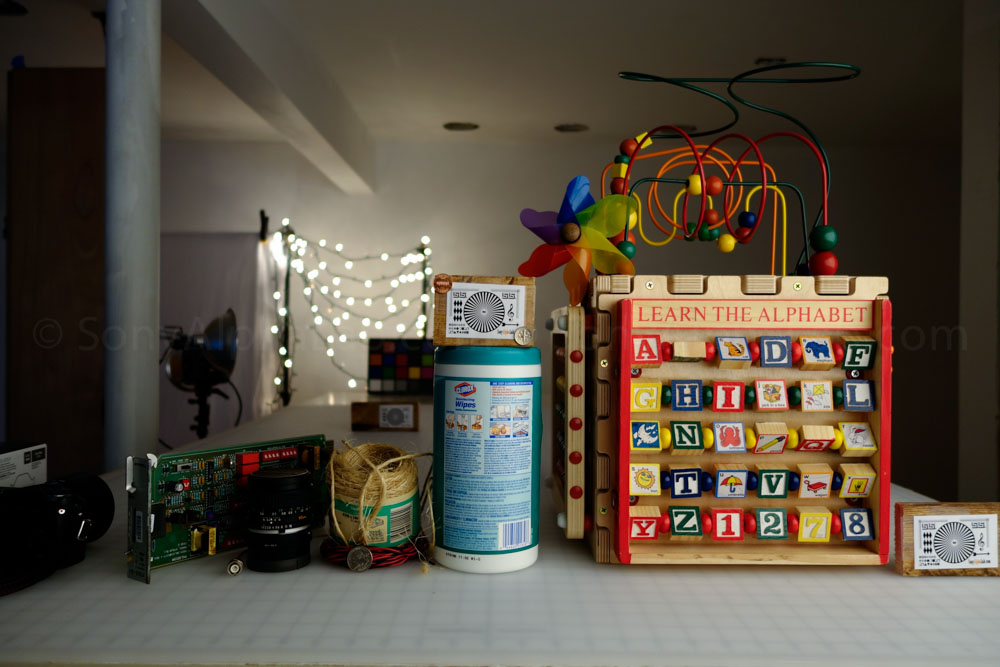
Be sure to click on all the photos for the high res ~1000px versions!
| Lower Left | Middle area | Lower Right | |
| f/1.8 | 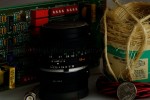 | 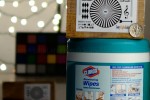 |  |
| f/2.8 | 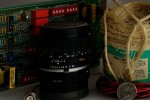 | 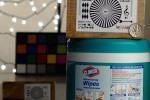 | 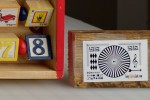 |
| f/4 | 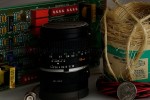 | 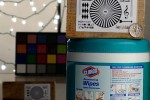 | 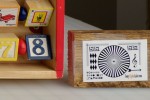 |
| f/5.6 | 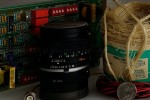 | 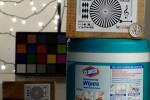 | 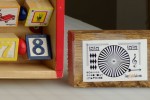 |
| f/8 | 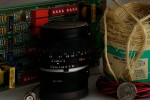 | 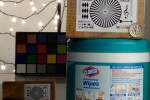 | 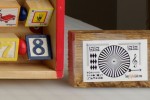 |
| F/11 | 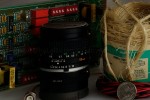 | 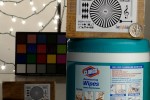 | 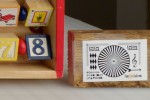 |
Lab Scene @ 37.1mm (3.6x) ~100mm equivalent
Full Scene @ f/4.9 I had the RX100 II set to Aperture Priority mode, ISO 100, Auto WB – corrected in lightroom 5 using center test chart, Average Metering, Auto focus, tri-pod, and 2-second self timer.
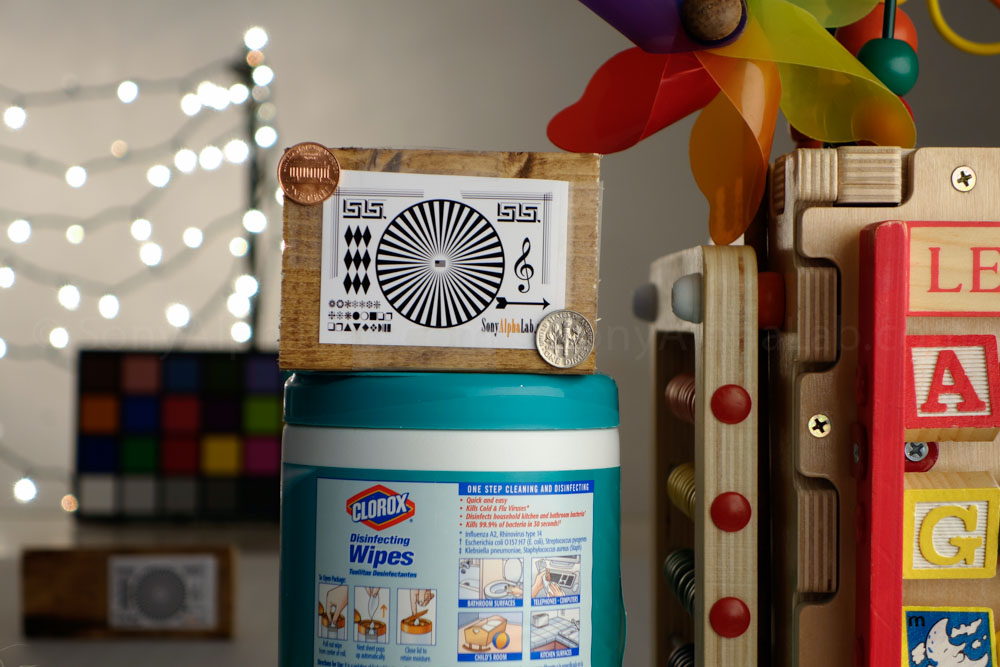
| Lower Left | Middle Left | Middle Area | |
| f/4.9 |  |  |  |
| f/5.6 |  |  |  |
| f/8 |  |  |  |
| F/11 |  |  |  |
ISO Testing – Raw Vs Jpeg
The RX100 II is noticeable improved over the previous generation in the low light/ high ISO department. Check out the results from the lab below and I think you will agree.
| ISO | Raw Quality | Jpeg Fine |
| 100 | 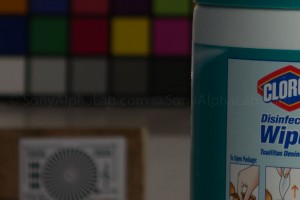 | 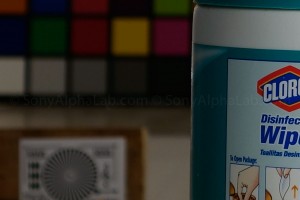 |
| 200 | 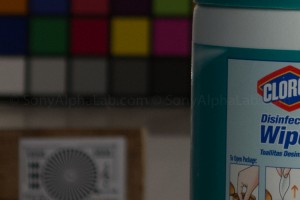 | 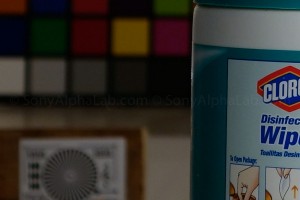 |
| 400 | 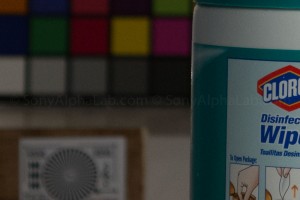 | 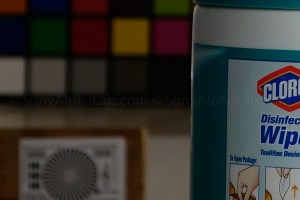 |
| 800 | 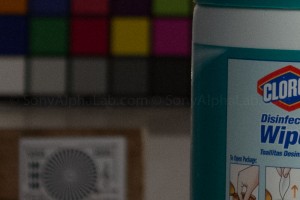 | 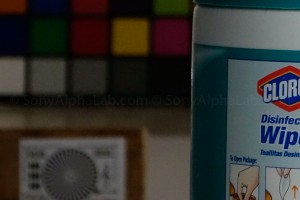 |
| 1600 | 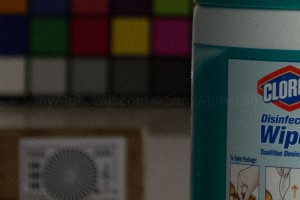 | 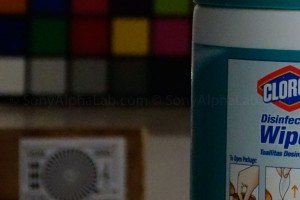 |
| 3200 | 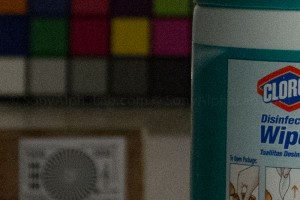 | 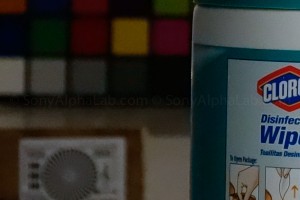 |
| 6400 | 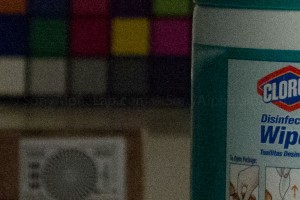 | 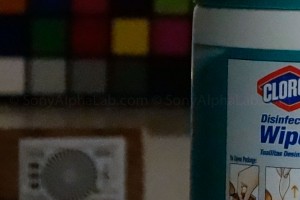 |
| 12800 | 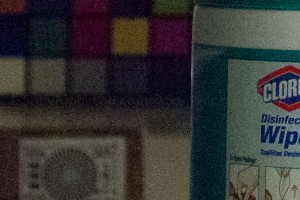 | 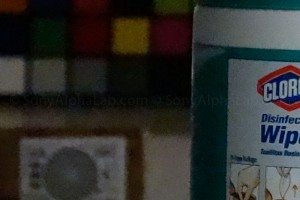 |
Bokeh Test @ Minimum Focus Distance
The Sony Rx100 II is capable of some pretty amazing separation and bokeh, considering the ultra compact form factor design. I had the camera pretty much as close as I could get to the center test chart and have the focus. I was about 1 foot or so @ f/1.8 and 10.4mm. As soon as you start to zoom the aperture stops down towards f/4.9 as you get to 37.1mm which is max zoom. In other words, the camera is only f/1.8 at 10.4mm or zero zoom. The bokeh is most exaggerated at the minimum focus distance, 10.4mm, and f/1.8 in the Lab.
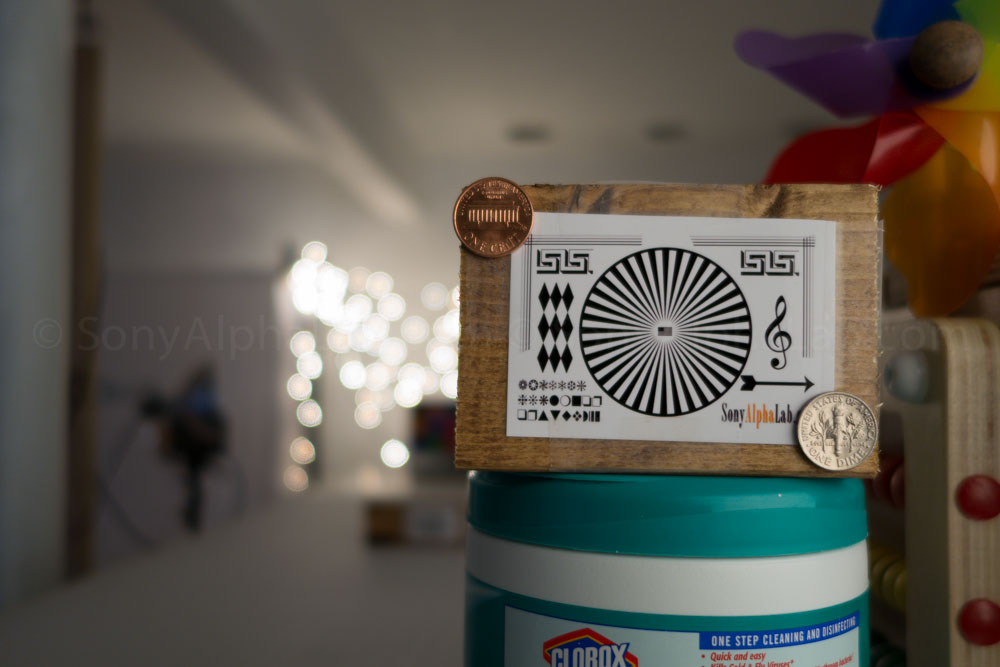
RX100 II Real World Performance
The Sony RX100 II performed very well overall, but I want to break down a few areas for you to clear up any concerns you might have.
AF Performance:
The Sony RX100 II AF is just as fast as my Nex-6 Hybrid AF sensor equipped camera, when basic point and shoot photography is going on. The AF is also very accurate and seems to know what you want to focus on most of the time. The facial recognition helps with people and the camera decides on the settings when in full auto to make the photos look their best. It works really well in the real world and the speed/ accuracy is top quality.
Image Quality:
The RX100 II image quality is incredible and a step up from the original RX100. Dynamic range seems a little better than the predecessor, and the color and contrast has killer punch in Jpeg quality. The fact that Sony can get such killer image quality out of a 1″ sensor with 20mp density is amazing to me, honestly. I remember feeling the same way when I had my hands on the original Sony RX100. Most of the time the RX100 II does and excellent job. Occasionally when in Superior Auto mode, one of the muti-shot features like Auto HDR will enable and catch you off guard. That can be turned on and off in the menu, but I would leave it on and re-take the shot if it seems to make sense. Often Auto HDR will do a much better job if there is nothing moving in the scene and the dynamic range is really high. In camera lens correction is also excellent. You can see examples of this best on the images with vertical and horizontal lines near the edge of the frame. Note how strait they are.
High ISO:
Significantly improved over previous generation, but not as good a the larger APS-C sized sensor cameras as you might expect. Very impressive performance overall in my opinion considering the 20mp pixel density on a 1″ image sensor. The lab tests show how well the jpeg files handle the noise in comparison to the raw quality images.
Articulating Screen:
Functionally the new articulating screen is awesome for getting those really low angles and over head photos. Build quality wise, the screen is a little fragile in my opinion when articulating. When fully closed the screen is pretty solid. It’s a small sacrifice to pay for having basically the same form factor as the original with much more real world user versatility. Making it a touch screen would have been the snakes hips though. I think Sony was trying to keep the costs down and had to scratch the touch screen even though many in the design team wanted it.
Manual Zoom Ring
The manual zoom ring has a nice amount of dampening to it when turning, and a zoom guide pops up on the screen with the most common equivalent focal lengths highlighted. You can see it change as you zoom like the speedometer in your car. If you use the regular zoom toggle with your pointer finger the camera on;t tells you the zoom X factor, not the actual focal length equivalent. It’s a great feature and I’m enjoying the ability to get the camera at the equivalent focal lengths, as it’s otherwise very difficult do to the crop factor and actual lens size etc..
Sony RX100 II Accessories
The Sony RX100 II has several accessories worth mention, but the one I would want most is the electronic viewfinder. However, It’s not exactly cheap at a whopping $448 US, but it turns the camera into a mid day sun shooter with ease, and is also compatible with the full frame DSC-RX1 if you happen to own that camera as well.
- Sony RX100 II Carrying Case @ BHPhoto >>
- Sony NP-BX1 Battery @ BHPhoto >>
- Attachment Grip – AG-R2 @ BHphoto >>
- IKElite Underwater Housing @ BHPhoto >>
- Recommended Memory Cards >>
Conclusions
In full auto jpeg quality modes the Sony RX100 II is an absolute blast to use and the image quality rivals and beats much larger sensor equipped cameras in my opinion. Raw image quality is also very good and less saturated, sharpened, and noise reduced than the jpeg files, leaving lots of room for development in post if that is your preferred editing workflow. I personally prefer shooting in Jpeg mode on the RX100 II, because all the camera features work, and the on camera image processing is excellent in my opinion.
On my Nex-6, I prefer to shoot raw and develop the photos myself most of the time. This is just my personal preference mind you as the RX100 II is a pocket-able point and shoot, and my Nex-6 is now my “Real Camera”, for lack of a better phrase, and much larger. I tend to take my time more, and plan how I want the final photo to look when using it. I then expose for that as best I can using Raw quality. I will then work the image out from there in Lightroom and/or Photoshop. For snap-shot on the go type photos, jpeg mode and taking advantage of all the camera features is the way to go for me.
Raw quality shuts off most of the advanced camera features, because on camera processing is being applied to the image. Raw is a non processed file, so it would not make sense to apply an effect to it. It’s assumed your going to work the raw files in post an create your own interpretation. With all this in mind, jpeg mode is the way to go for most photos, and depending on your final intentions and/or work flow Raw quality is a powerful option for advanced editors.
It could be argued that the price is a little high on the Sony RX100 II @ $https://bhpho.to/2L0SjJ2748 US, but when you factor in the actually real world image quality, ease of use, and pro grade features and performance, it’s totally justified.
I really enjoyed using the Sony RX100 II and I think it’s an excellent option if you’re looking for a top quality pocket-sized ultra compact pro grade camera. The articulating screen and standard hot show really does add to the versatility of the camera, and the new sensor also makes a significant improvement in low light performance. The battery life could be better, but with such an ultra compact design, it’s hard to fit anything larger into the body as the design currently stands.
I really hope you got what you are looking for in this review, thanks for your support by using my links, and please feel free to ask questions below if you have them.
Thanks again, Jay
The Sony RX100 II retails for $748 US @ BHphotoVideo

